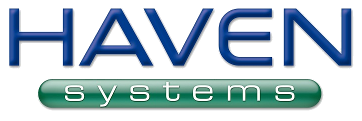Regardless of the type of business you’re running, if you’ve got a product you’re selling, you’ve got inventory to manage. It’s something that companies tend not to focus so often on, as they’re initially focused on selling that product. Yet stock control is an integral part of any business’s bottom line and needs to have a proper stock control system behind it.
Digitising that system can easily be done if you go to our epos page and see all the benefits possible. This is especially useful for a UK-based stock control system as well.
What is stock control?
Stock control methods can vary from business to business, but the overall themes are the same. It’s a systematic way of tracking all the stock your company has in a centralised format. This can be done manually on paper, through spreadsheets, or with a sophisticated enough epos system. This means an owner or its employees are fully aware at all times of what is in stock and what type of stock needs to be replaced.
Keep in mind that stock control management is a constant task, and to do it manually, i.e. updating the numbers after each sale, can be a painstaking process that takes too much time and is completely inefficient. That’s why it’s essential from the beginning to have stock control methods that are automated and integrated seamlessly into epos systems.
Why do I need stock control?
Above we discussed what it is, but it’s important to know just how effective an integrated stock control management system is at helping your business. Stock control helps prevent lost items through theft or damage and helps mitigate those losses and possibly write them off as a loss and an expense when it comes to the accounting portion. The shrinkage it prevents is also internal, as staff members will know that all the stock numbers are being consistently tracked.
Then it’s about knowing when to order more stock. Through the integration of epos systems, you’re able to identify when supply is running low. These parameters can be set up ahead of time and can be a physical number or a percentage of the total overall levels. That means the business is able to reorder just in time to get them shipped and delivered as the stock is completely depleted.
The more data and usage the system gets, the better the forecasting accuracy becomes, as there will be reporting tools that help showcase all areas and trends. For example, stock control reporting shows what gets restocked the most, how many days stock stays unsold, and how efficient restocking happens. These are just a few ways to track stock control and better understand your business.
Eventually, this will also help to be another data point that shows you, as a business, the best sellers amd highest profit margin products. The inventory running out the fastest can help shape a story of what direction to pivot the company.
For example, suppose you’re a retailer and you notice sneakers needing to be constantly restocked versus jerseys and sweaters. In that case, you may start to expand your sneaker variety and volume to meet with demands.
It can help in the restaurant business too.
Restaurants work a bit differently with stock control as there are two types. First, there are the ingredients in their unprepared format, and then dishes that are prepared from teh ingredients and ready for service. Both of these need to be tracked appropriately and have the right alignment and balance. This is more important in restaurants than in other retail types, as there’s an expiration date on the food items. That means stock control methods should actually be a priority here to mitigate losses due to the expiration of food items.
Eventually, with the right type of stock control system and epos system in this sector, restaurants will be able to restock as needed and have the freshest foods available when making their products.
They will also help build the foundation for advanced reporting features to see the actual cost per food item for sale based on the ingredients. This type of insight truly allows restaurants with information to move forward.
In the end
Don’t consider getting an epos system without understanding the function of the stock control management tools. Make sure that the stock control system is functioning for your business versus trying to go for a one size fits all approach. Those types of systems can help initially but don’t always have the nuanced features unique to each type of business out there.
Without these stock control methods, you’ll be prone to missing inventory, food waste, and weaker bottom lines, where retail is already on a smaller margin than other business types. So get ahead of it, and always know what stock you have and what you’ll need in the near future.

